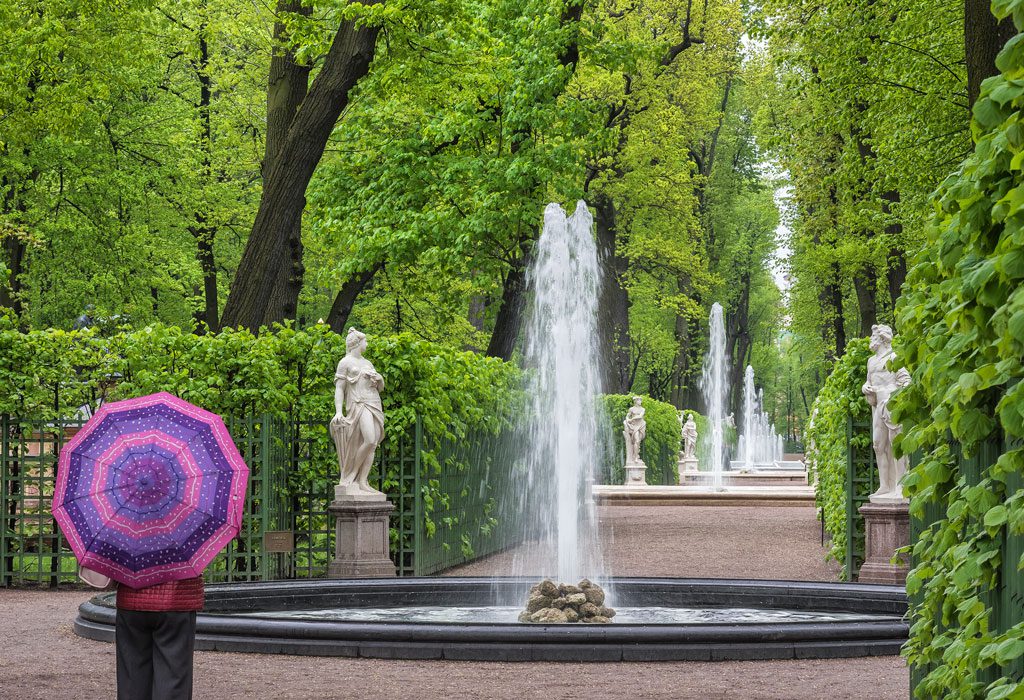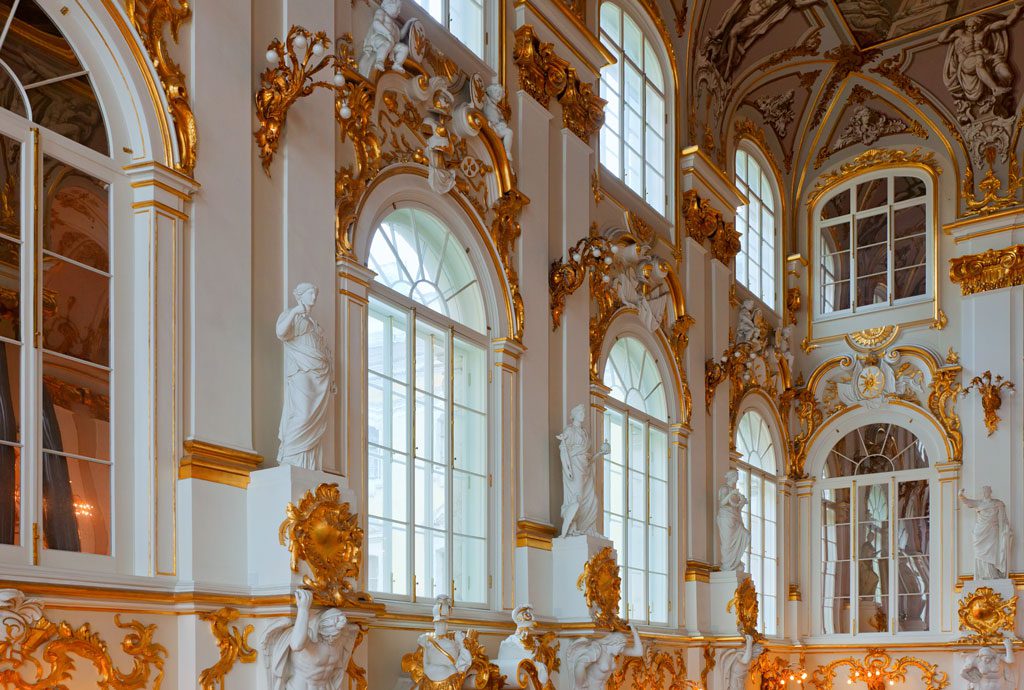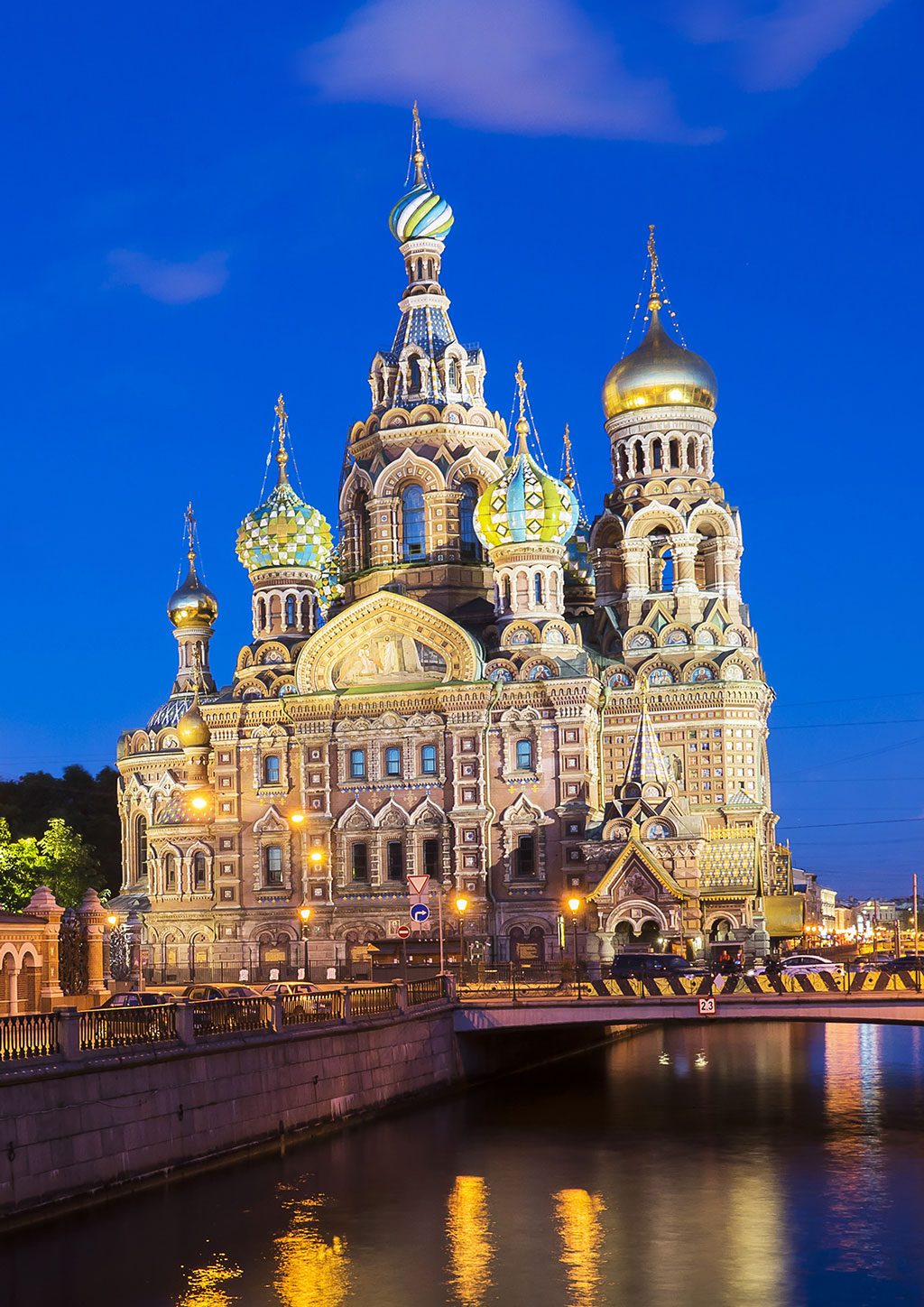
It’s the city of Fyodor Dostoyevsky, Anna Akhmatova, Pyotr Ilich Tchaikovsky and Aleksandr Pushkin. It’s a magnificent expanse of rivers, canals and harbors spread across 40 islands – the “Venice of the North.”
While St. Petersburg was founded by Peter the Great, it was named for St. Peter and designed in the tradition of the great cities of Western Europe with long boulevards and grand public squares. From 1924 to 1991 in the Soviet era, the city on the Baltic Sea was known as Leningrad.

Base Camp
One of St. Petersburg’s finest hotels is also one of its best-located. The Belmond Grand Hotel Europe on the bustling Nevsky Prospect, St. Petersburg’s main street, is within easy walks of the Summer Garden, the State Russian Museum, the Hermitage Museum and the Church of the Savior on Spilled Blood.
The hotel is a bit of an artifact itself; constructed at the beginning of the 19th century, it features a neo-baroque facade and art nouveau designs. It houses Russia’s oldest continuously serving restaurant, L’Europe, and the Caviar Bar and Restaurant, offering 15 kinds of caviar and 35 varieties of vodka.
Just for Fun
A new public park was recently installed on New Holland, one of the city’s man-made islands. Visitors enjoy everything from public art and sporting events to concerts.
A gigantic flea market called Udelka sells it all: wares from the Soviet days, items from Turkey, vintage luggage, 1990s T-shirts, toys from yesteryear, authentic Soviet clothing, and parts from Russian cars built in 1960s and 1970s.

Neighborhood bookshops – St. Petersburg has dozens – offer lots of titles and magazines while also serving as meeting places for thoughtful discussion. Plus, many serve coffee.
The live music scene is big. One popular, somewhat grungy venue is Slam City on Grazhdanskaya Street; it serves up U.S.-inspired garage rock. Other musical genres also flourish.

Must-Sees
The 254-year-old Hermitage is one of the most interesting museums in the world. It was founded by Catherine the Great to exhibit her massive collection of paintings and classical antiquities. The compound comprises six buildings, including the Winter Palace, home of the czars for many years and open for tours. In 2014, a contemporary wing called the General Staff Building opened to rave reviews, particularly for its grand staircase and luminous glass ceiling.
St. Isaac’s Cathedral, completed in 1858 after 40 years of construction, remains a marvelous testament to neo-classical architecture. The building, which survived Nazi bombing during World War II, once served as a museum of atheism in Soviet days.

The State Russian Museum consists of the Mikhailovsky Palace, the Stroganov Palace, the Benois Wing, Saint Michael’s Castle and the Marble Palace. In all, it’s the largest collection of Russian fine art in St. Petersburg. Many pieces are exquisite gifts presented to czars and represent Russia’s many ethnicities.
The lavishly decorated, onion-domed Church of the Savior on Spilled Blood was built on the spot where Czar Alexander was assassinated in 1881. Refurbished in 1997, the building has ceilings and interior walls covered with more than 80,700 square feet of intricate mosaics.
White Nights
More than 150 top-notch cultural offerings occur from late May to late July, when the sun never fully sets. The Stars of the White Nights features ballet, opera and classical music performances and concerts, plus added special events.






















